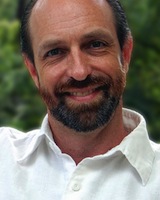Rascals in Paradise
Posted by Ben Scales on Aug 13, 2012 in General“Rascals in Paradise” is the title of collection of non-fiction short stories co-written by James Michener and U. of Hawaii professor Arthur Grove Day, published in 1957, and subtitled “Turbulent Adventures and Bold Courage on the South Seas.” It’s full of romantic tales of the adventurous men of questionable character who sailed the Pacific Ocean, such as Bully Hayes and Captain Bligh. I read it before moving to Saipan. My experience there in the 1990s wasn’t nearly as rough and tumble, but it contained a pretty good adventure or two, such as this one:
Shortly after my clerkship at the US District Court on Saipan ended, I became involved in what was then the largest probate case in the world. DHL founder Larry Hillblom, a confirmed bachelor, died when his small private plane crashed into the Pacific Ocean in May 1995. He left behind an estate conservatively estimated at $1 billion, a poorly drafted will, and a number of women who claimed that he was the father of their children. I was a member of four-lawyer team representing one of those children. Mr. Hillblom’s will, which would have given all of his estate to a group of his business associates in a so-called “charitable trust,” was silent as to after-born children. This meant the children were entitled to the entire estate as if there were no will. The battle between Larry’s kids and friends had begun.
Besides the vast sums of money at stake, the case was complicated by a number of factors. First, Mr. Hillblom’s assets were spread out all over the world, with no one knowing what exactly was where. Second, there was no easy way to prove or disprove the heirship claims of any of the children, because Mr. Hillblom’s body was lost at sea without trace. Moreover, Mr. Hillblom’s business associates, fearing the existence of one or more child-claimants, orchestrated a massive effort to destroy any potential sources of Mr. Hillblom’s DNA by scrubbing his house and car on Saipan, pouring muriatic acid down his drains, and burying his clothes and personal effects in a field behind his house with a backhoe. Third, Mr. Hillblom’s associates were able to shepherd a special law through the CNMI legislature purporting to retroactively disinherit all children born out of wedlock. Fourth, his associates had undertaken a series of bizarre transactions in an attempt to take control over the executor named in Mr. Hillblom’s will, using Mr. Hillblom’s assets as collateral to do so. When the heir claimants objected to those transactions, the Saipan court ordered wide-ranging sanctions against the executor and Mr. Hillblom’s associates. These events, and others, led to years of contentious litigation in courts in San Francisco, Hong Kong, Guam, Honolulu, Manila, Vietnam, Greece, Brussels, and Paris. The case was featured in media outlets as diverse as the Wall Street Journal, Dateline NBC, the San Francisco Examiner, Vanity Fair, and Penthouse.
Finally, in spring of 1998, an agreement was reached allowing DNA testing among the heirship claimants. Testing revealed that four children, born over a 13-year period in three different countries, all shared a common father. My client was one of those four. Settlement negotiations began in earnest shortly thereafter, in San Francisco, Guam, and Saipan, concluding in an agreement that summer that provided that each of Mr. Hillblom’s four children would receive 15% of the estate.
The Hillblom case provided me with a virtual “masters” in law, science, economics, and business, as the case proceeded through state and federal courts, guardianship courts, probate courts, and international arbitration and mediation. Through the process of this complex international litigation, I worked alongside and against the titans of the legal and financial world, and sat at the table where $1 billion was divided up. I saw the depths of the depravity to which educated and successful men and women would stoop in the blind pursuit of riches. I saw the corrupting influence these millions had on judges, lawyers, clerks, legislators and governors. I learned the cold hard reality that when the law and wishes of the powerful are in conflict, the law must yield, at least until the powerful can get themselves ready to acknowledge and then follow the law.
Most of all, I learned about compromise. The children were entitled to 100% of the estate according to the law as of their father’s death. They settled for 60%, rather than risk getting nothing if the powerful men who controlled their father’s estate got their way. Rather than proceeding through trials and appeals for years longer, the case was closed with a settlement that promised “everlasting peace.”
As if such a notion exists.

